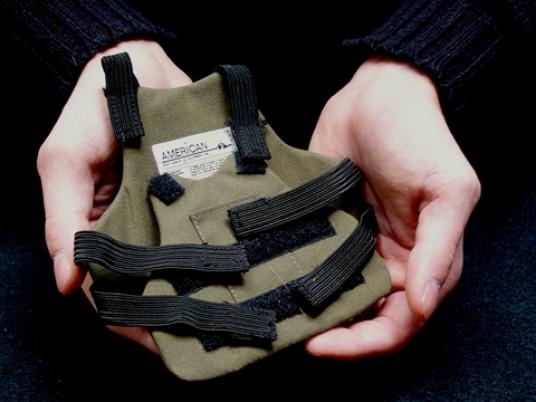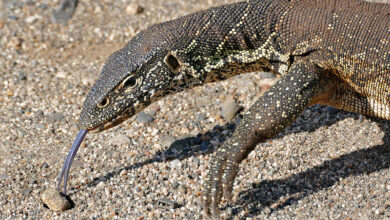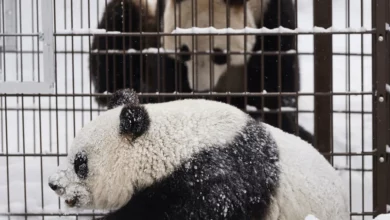
The work of Canadian concept artist Bill Burns is currently being exhibited in Bristol, England, in the Arnolfini gallery. One may wonder, with reason, why on Earth the environment section of Al-Masry Al-Youm would cover the work of an artist who is not even showcasing his work in Egypt? The answer is that Bill Burns is one of the rare artists who has chosen the ecological and environmental cause to be the core of his artistic work.
His exhibition, titled “Safety gear for small animals,” (SGSA) displays — along with tables crammed with literature on animal conservation and protection and small plastic models of animals being rescued — a collection of 19 types of safety gear designed for small animals, including a tiny life jacket, pocket-sized bullet-proof vest, floatation device, safety goggles and rubber work gloves in bright glossy orange.
When his exhibition was first showcased in New York in 1994, most of the visitors were bewildered at the sight of these objects originally made for humans, whose function had switched to protect animals like otters, beavers and other small animals that rustle in the Canadian forest.
Bill Burns, who was contacted by Skype at his house in Toronto, explains that the whole concept of SGSA came about when he was a kid growing up in Saskatchewan, a western province of Canada where, according to him, people have a strong love for animals and climate protection.
“It was an optimistic time when I grew up in the 60s,” he explains. “I remember that an editor of a magazine wrote that that he believed the ozone depletion which began to be known in the early 70s would be solved by aerosol sprays,” he says with a wide smile.
“The project of safety gear for small animals is a bit like the aerosols preventing the ozone depletion: it’s a reversal of logic.” Through this idea of crafting small safety equipment for animals, which he mulled over for years before purchasing a sewing machine and surveying fabric stores, Burns wanted to raise awareness about the environment's destruction as a whole.
“It’s the idea that we could make a change in the world by making safety gear for humans and give them to animals and test them on them in the wild,” he says, stressing that he never actually put a jacket around an otter, but tested his equipment on his cats at home.
He explains that designing small gear for animals involves patient and acute observation of the animals’ morphology. The safety equipment he has chosen is androcentric in the sense that it is completely tied to the human reference and designed exactly like human safety jackets, just smaller. “My orange rubber gloves for small animals are not specific for animals, so I basically ask the audience to make a leap of faith to make it suitable for any animal,” he explains with a smile.
“My artwork with animals is part of an interest that is not just biological or artistic, but when I imagine a world that has only coyotes, pigeons and cockroaches, I see it as an impoverished world,” he explains.
He insists that if we lose biologically and ecologically, we also lose culturally.
“As human beings, we have this complex relationship with animals that I think is very interesting to artists,” he says.
Apart from the couturier collection of SGSA, many plastic animals are scattered around the exhibition space, with some placed inside models of helicopters and planes. These are based on true stories of rescues and relocations of animals in the wild. As Bill Burns relates, in the far north of Canada, climate change has had a heavy impact and now rain falls in the winter, trapping food supplies for reindeer or caribous under a thick layer of ice. This often makes the vegetation inaccessible for the animals, who starve to death.
“The caribous have been transported in DC3 airplanes, 400 at a time, to one zoo in Canada and another one in San Diego for the winter, and have been transported back to the far north in spring,” he explains, insisting on the importance of missions such as these that help animals escape from degraded habitats.




